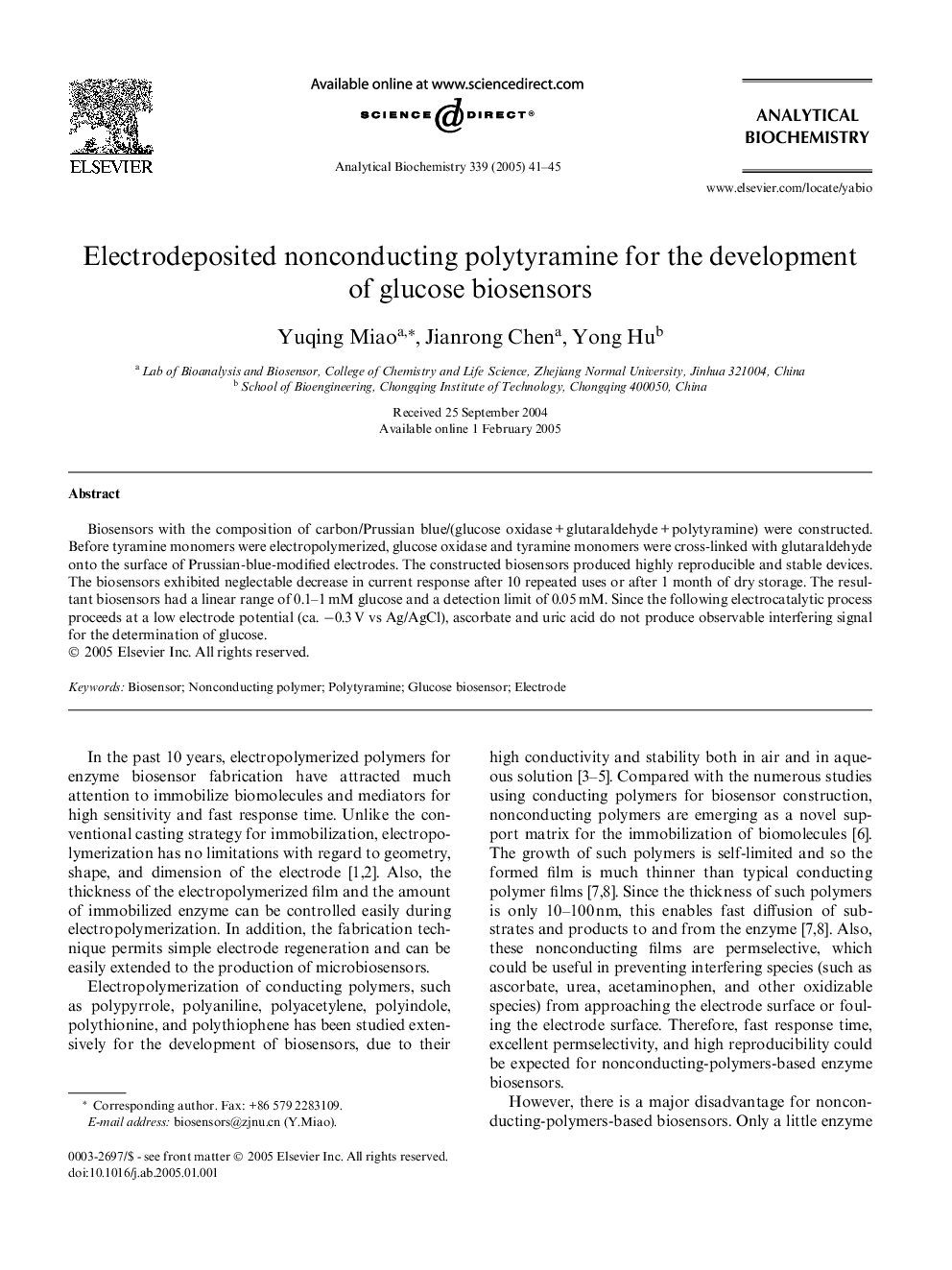| Article ID | Journal | Published Year | Pages | File Type |
|---|---|---|---|---|
| 10536297 | Analytical Biochemistry | 2005 | 5 Pages |
Abstract
Biosensors with the composition of carbon/Prussian blue/(glucose oxidase + glutaraldehyde + polytyramine) were constructed. Before tyramine monomers were electropolymerized, glucose oxidase and tyramine monomers were cross-linked with glutaraldehyde onto the surface of Prussian-blue-modified electrodes. The constructed biosensors produced highly reproducible and stable devices. The biosensors exhibited neglectable decrease in current response after 10 repeated uses or after 1 month of dry storage. The resultant biosensors had a linear range of 0.1-1 mM glucose and a detection limit of 0.05 mM. Since the following electrocatalytic process proceeds at a low electrode potential (ca. â0.3 V vs Ag/AgCl), ascorbate and uric acid do not produce observable interfering signal for the determination of glucose.
Related Topics
Physical Sciences and Engineering
Chemistry
Analytical Chemistry
Authors
Yuqing Miao, Jianrong Chen, Yong Hu,
